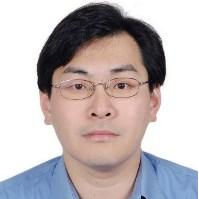Plasma Science and Plasma-Assisted Applications
A special issue of Processes (ISSN 2227-9717). This special issue belongs to the section "Chemical Processes and Systems".
Deadline for manuscript submissions: 30 May 2025 | Viewed by 949
Special Issue Editors
Interests: plasma technology; plasma-assisted combustion; space propulsion
Interests: application of plasma technology; plasma diagnostics/simulation; thermal/flow numerical simulation; high-performance parallel computing
Interests: plasma technology on materials processing; solar cell; water splitting; hydrogen generation; supercapacitor; redox flow cell; fuel cell; battery; flexible electronics
Special Issues, Collections and Topics in MDPI journals
Special Issue Information
Dear Colleagues,
Plasma science is a multidisciplinary field that explores the fundamental properties, behaviors and applications of plasmas. It encompasses various branches of physics, chemistry and engineering to study and understand the intricate nature of this highly ionized state of matter. The applications of plasma science span a wide range of fields, from energy and materials science to biomedicine and aerospace engineering. Plasma-assisted technologies have transformed industries such microelectronics, where plasma etching and deposition techniques are used for fabricating integrated circuits and other electronic devices.
Plasma science continues to evolve and expand, driven by ongoing research and technological advancements. As our understanding of plasmas deepens, new applications and innovations are being discovered, offering exciting possibilities for addressing challenges and advancing various scientific and technological frontiers. This Special Issue on “Plasma Science and Plasma-Assisted Applications” is aimed to focus on the recent developments and research on plasma physics, plasma chemistry, plasma technology and plasma applications in, but not limited to, energy, combustion, aerospace, biology, medicine, manufacturing, fluid mechanics and environmental science.
Dr. Ying-Hao Liao
Dr. Kun-Mo Lin
Prof. Dr. Jian-Zhang Chen
Dr. Katsuyuki Takahashi
Guest Editors
Manuscript Submission Information
Manuscripts should be submitted online at www.mdpi.com by registering and logging in to this website. Once you are registered, click here to go to the submission form. Manuscripts can be submitted until the deadline. All submissions that pass pre-check are peer-reviewed. Accepted papers will be published continuously in the journal (as soon as accepted) and will be listed together on the special issue website. Research articles, review articles as well as short communications are invited. For planned papers, a title and short abstract (about 100 words) can be sent to the Editorial Office for announcement on this website.
Submitted manuscripts should not have been published previously, nor be under consideration for publication elsewhere (except conference proceedings papers). All manuscripts are thoroughly refereed through a single-blind peer-review process. A guide for authors and other relevant information for submission of manuscripts is available on the Instructions for Authors page. Processes is an international peer-reviewed open access monthly journal published by MDPI.
Please visit the Instructions for Authors page before submitting a manuscript. The Article Processing Charge (APC) for publication in this open access journal is 2400 CHF (Swiss Francs). Submitted papers should be well formatted and use good English. Authors may use MDPI's English editing service prior to publication or during author revisions.
Keywords
- plasma technology
- plasma physics
- plasma chemistry
- plasma applications
- plasma-assisted combustion
- plasma-treated water
- plasma coating
- plasma medicine
- plasma processing
- plasma diagnostics








